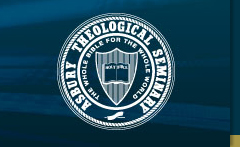This work is accessible only to Asbury Theological Seminary faculty, staff, and students. Off-Campus users should request the resource through our Library Loan system or contact the Help Desk for assistance.
Files
Download Full Text (9.6 MB)
Summary
This study investigates the indigenous prayer phenomena of Korean Christians praying at the Prayer Mountain Centers (PMCs) in South Korea. Special focus is given on studying preferred terms and phrases used in prayers at PMCs and in Korean churches. The purpose of this study is to discover if the Christians’ prayers at PMCs are an example of shamanistic syncretism or if they are an expression of indigenous Christianity. The research begins by recognizing the lack of biblical and cultural study of indigenous prayers in the Korean church and church leaders’ negative criticisms of the prayer phenomena as shamanistic. Various methodologies were applied to collect the data needed. An open interview was conducted with 50 Christians at three PMCs (Osanri PMC, Hanolsan PMC, and Daehan PMC), 16 local pastors or theologians, ten PMC revival leaders, and 13 lay church leaders, along with library research and participant observation of prayer meetings both at the PMCs and in the church. The anthropological concept of form and meaning is used to evaluate whether the beliefs and patterns that PMC Christians practiced carry shamanistic or Christian meanings. is not determined only by the forms that PMC Christians use, but it is a matter of animistic meanings carried in the forms. Shamanistic syncretism The research findings show that most indigenous beliefs and patterns of PMC Christians cannot be simply treated as expressions of shamanistic syncretism. Korean church leaders’ incorrect negative evaluations of the PMC prayer phenomena come mainly from their lack of cultural understanding of the phenomena and their misunderstanding of religious syncretism. Based on the findings of this research, a set of guidelines is presented for PMC Christians in order for their prayers to meet their needs without falling into the danger of shamanistic syncretism and for their PMC experience to influence the holistic dimensions of their daily lives. Another set of guidelines is presented for church leaders to provide them with a better cultural interpretation of the PMC prayer phenomena and a more biblical content for teaching about prayer, so that the dynamics of Korean prayers can be both biblically faithful and culturally relevant for the Korean context.
Publication Date
December 2002
Publisher
Asbury Theological Seminary
Keywords
Jung, customs, K, Yong, Religious, Mountain, Prayers:, --, 2002, at, Evaluating, studies, Prayer, life, Comparative, Shamanism, South, Korea, Phenomena, Christianity, Korean, Centers
Language
English


Comments
xiv, 487 leaves: ill., tables; 29 cm. Old URL: http://ecommons.asburyseminary.edu/xmlui/handle/10910/16648